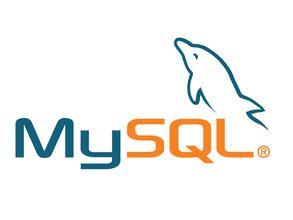OPC UA 提供了多种身份验证方式,其中包括基于用户名和密码的登录(匿名登录),以及基于数字证书的登录。以下是关于这两种登录方式的简要介绍以及简单实现的示例(基于 C# 和 .NET Standard Stack):
1. 基于用户名和密码的登录:
在这种登录方式中,客户端提供用户名和密码进行身份验证。服务器通过验证这些凭据来决定是否接受连接。
示例实现:
var userName = "user1";
var password = "password123";
// 创建 UserIdentity 对象
var userIdentity = new UserNameIdentityToken
{
UserName = userName,
Password = password
};
// 在连接时使用 UserIdentity 进行身份验证
var endpointDescription = CoreClientUtils.SelectEndpoint("opc.tcp://localhost:4840", useSecurity: true);
var configuration = EndpointConfiguration.Create(applicationConfiguration);
var endpoint = new ConfiguredEndpoint(null, endpointDescription, configuration);
var session = await Session.Create(
configuration,
new ApplicationInstance().ApplicationConfiguration,
endpoint,
new AnonymousIdentity(), // 匿名身份,稍后会更改为用户名和密码
userIdentity,
null);
2. 基于数字证书的登录:
在这种登录方式中,客户端使用数字证书进行身份验证。服务器通过验证证书的有效性来决定是否接受连接。
示例实现:
// 指定客户端证书的文件路径和私钥的文件路径
var clientCertificatePath = "path/to/client-certificate.pem";
var clientPrivateKeyPath = "path/to/client-private-key.pem";
// 创建 X509Certificate 对象,表示客户端证书
var clientCertificate = new X509Certificate2(clientCertificatePath);
// 创建 UserIdentity 对象,使用 X509IdentityToken 进行身份验证
var userIdentity = new X509IdentityToken
{
Certificate = clientCertificate
};
// 在连接时使用 UserIdentity 进行身份验证
var endpointDescription = CoreClientUtils.SelectEndpoint("opc.tcp://localhost:4840", useSecurity: true);
var configuration = EndpointConfiguration.Create(applicationConfiguration);
var endpoint = new ConfiguredEndpoint(null, endpointDescription, configuration);
var session = await Session.Create(
configuration,
new ApplicationInstance().ApplicationConfiguration,
endpoint,
new AnonymousIdentity(), // 匿名身份,稍后会更改为数字证书
userIdentity,
null);
这些示例展示了如何在 OPC UA 客户端中使用用户名和密码以及数字证书进行身份验证。
在 OPC UA 中,提供了三种主要的用户身份验证方式,分别是匿名登录、用户名密码登录和证书登录。以下是对这三种方式的简要介绍:
在 OPC UA 中,提供了三种主要的用户身份验证方式,分别是匿名登录、用户名密码登录和证书登录。以下是对这三种方式的简要介绍:
1. 匿名登录(Anonymous Authentication):
- 介绍: 匿名登录是一种无需提供具体身份信息的登录方式。客户端和服务器之间建立连接后,客户端可以选择以匿名身份进行通信,而无需提供具体的用户名或密码。
- 使用场景: 适用于不要求具体用户身份信息的场景,例如公开的信息访问或测试目的。
- 示例代码:
// 在 OPC UA 客户端创建会话时,使用 AnonymousIdentity
// 创建一个 OPC UA 会话,用于与服务器建立连接和进行通信
var session = await Session.Create(
configuration, // 1. OPC UA 客户端的配置信息
new ApplicationInstance().ApplicationConfiguration, // 2. 获取应用程序的配置信息
endpoint, // 3. OPC UA 服务器的连接终端信息
new AnonymousIdentity(), // 4. 匿名身份,表示无需提供具体的用户身份信息
null, // 5. 不使用用户名密码进行身份验证
null); // 6. 不使用证书进行身份验证2. 用户名密码登录(Username/Password Authentication):
- 介绍: 用户名密码登录方式要求客户端提供用户名和密码进行身份验证。服务器根据提供的用户名和密码验证用户身份,并决定是否允许连接。
- 使用场景: 适用于需要具体用户身份信息,但不涉及证书的场景。
- 示例代码:
var userName = "user1";
var password = "password123"; // 在 OPC UA 客户端创建会话时,使用 UserNameIdentityToken 进行身份验证 var userIdentity = new UserNameIdentityToken {
UserName = userName,
Password = password };
// 在 OPC UA 客户端创建会话时
// 创建一个 OPC UA 会话,用于与服务器建立连接和进行通信
var session = await Session.Create(
configuration, // 1. OPC UA 客户端的配置信息
new ApplicationInstance().ApplicationConfiguration, // 2. 获取应用程序的配置信息
endpoint, // 3. OPC UA 服务器的连接终端信息
new AnonymousIdentity(), // 4. 匿名身份,表示无需提供具体的用户身份信息
userIdentity, // 5. 用户身份,可以是用户名密码、证书等
null); // 6. 不使用证书进行身份验证3. 证书登录(Certificate Authentication):
- 介绍: 证书登录方式要求客户端提供数字证书进行身份验证。服务器通过验证证书的有效性来确认用户身份,并决定是否允许连接。
- 使用场景: 适用于需要更强安全性和具体用户身份信息的场景,比如生产环境或对数据保密性要求较高的应用。
- 示例代码:
// 指定客户端证书的文件路径和私钥的文件路径
var clientCertificatePath = "path/to/client-certificate.pem";
var clientPrivateKeyPath = "path/to/client-private-key.pem";
// 创建 X509Certificate 对象,表示客户端证书
var clientCertificate = new X509Certificate2(clientCertificatePath);
// 在 OPC UA 客户端创建会话时,使用 X509IdentityToken 进行身份验证
var userIdentity = new X509IdentityToken
{
Certificate = clientCertificate
};
var session = await Session.Create(
configuration, // 1. OPC UA 客户端的配置信息
new ApplicationInstance().ApplicationConfiguration, // 2. 获取应用程序的配置信息
endpoint, // 3. OPC UA 服务器的连接终端信息
null, // 4. 不使用匿名身份
userIdentity, // 5. 用户身份,使用证书进行身份验证
null); // 6. 不使用其他证书进行身份验证这三种身份验证方式可以根据实际场景和安全需求进行选择。在实际应用中,需要根据具体的实现库和框架,配置服务器和客户端以支持相应的身份验证方式。同时,为了确保通信的安全性,服务器端需要进行相应的配置和证书管理。




